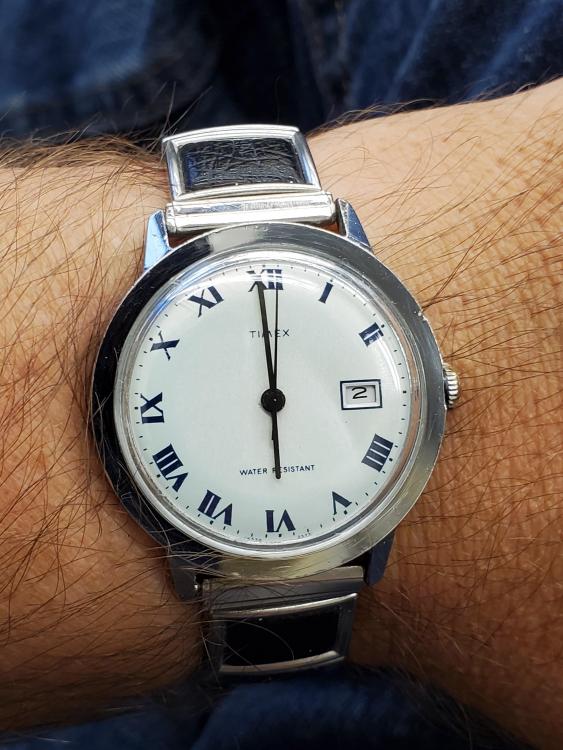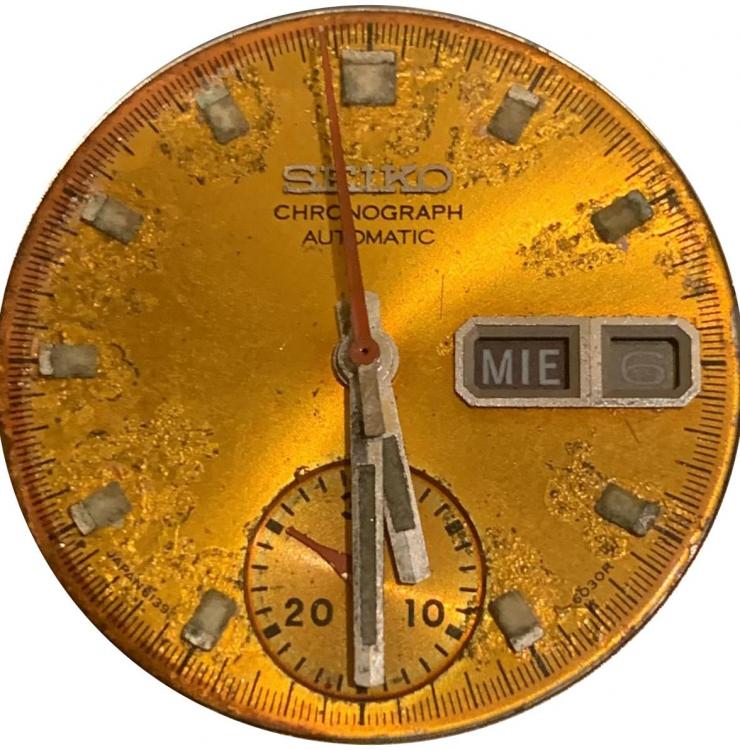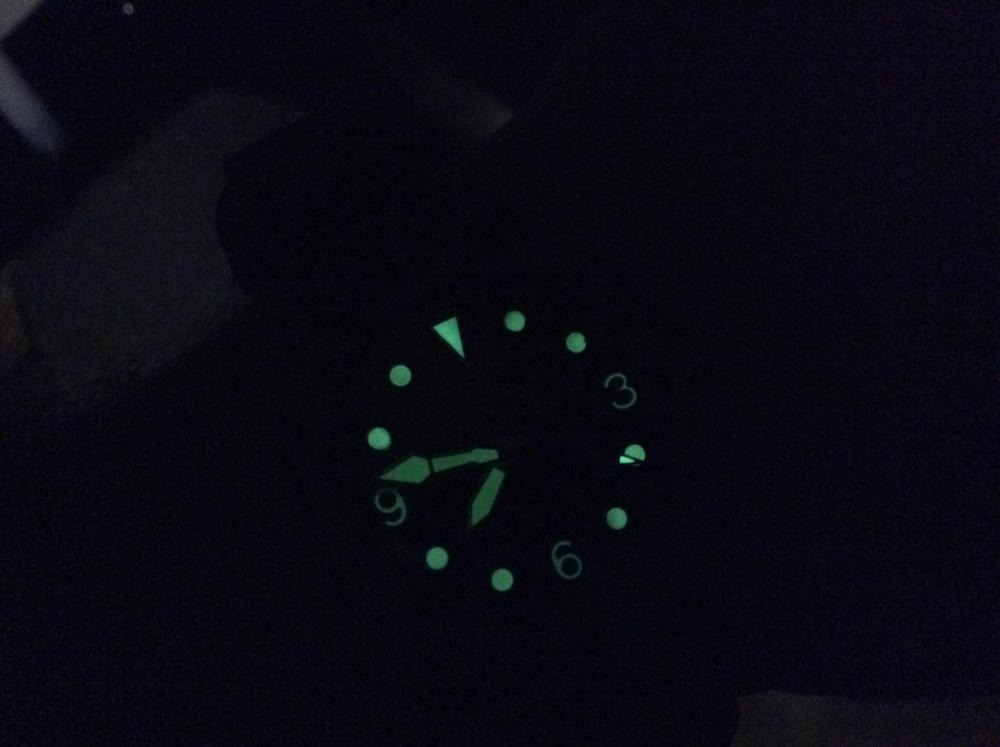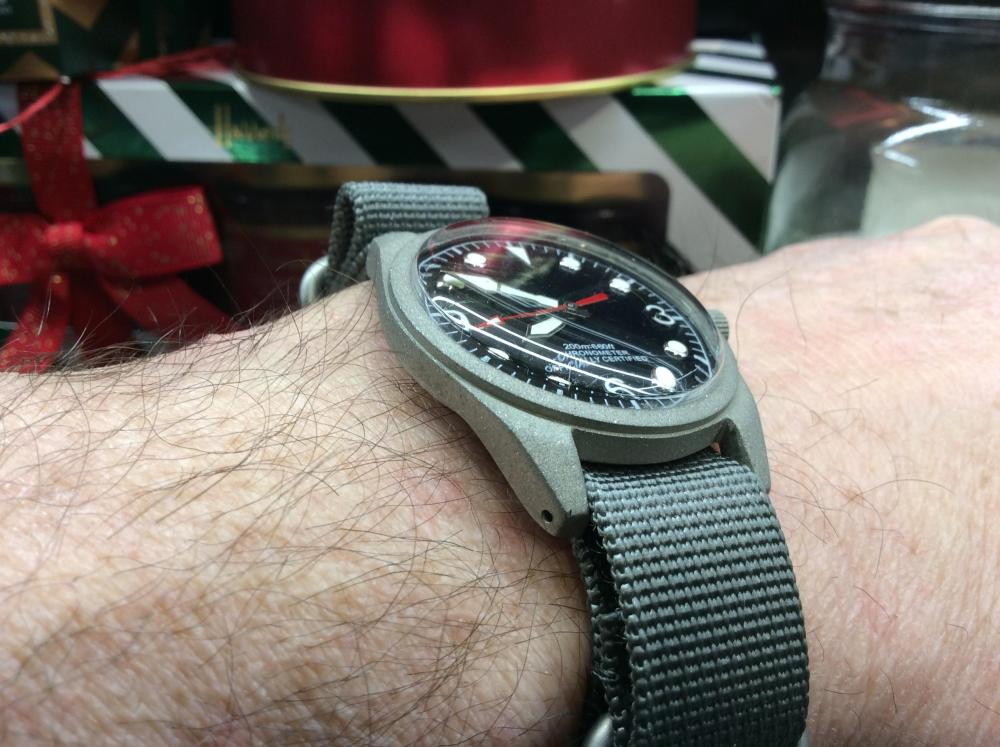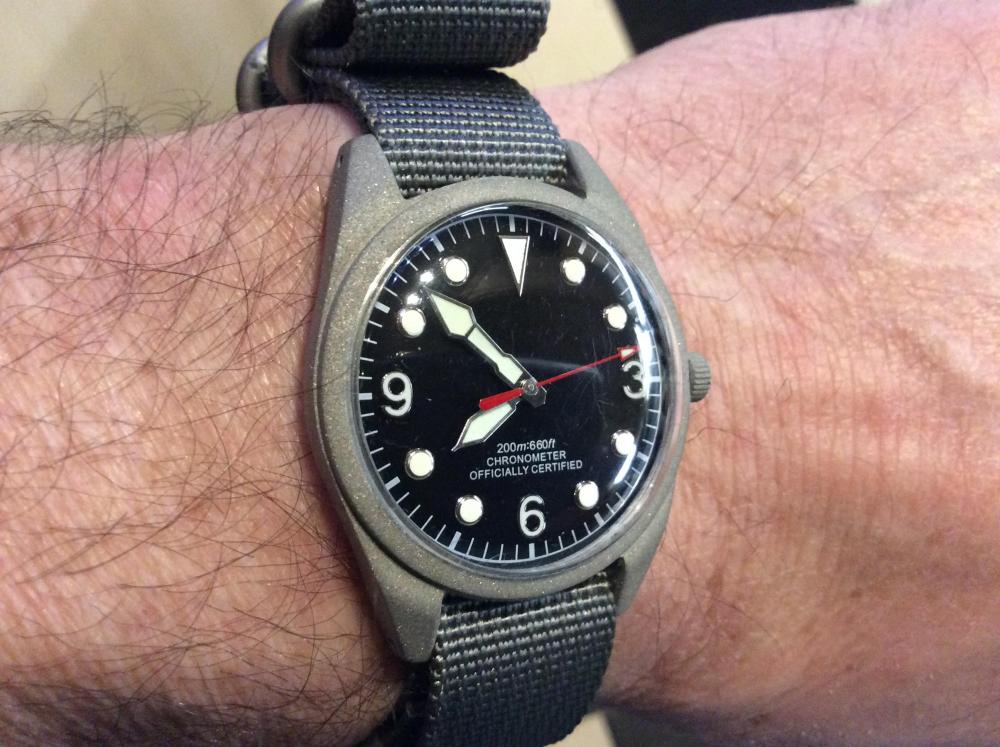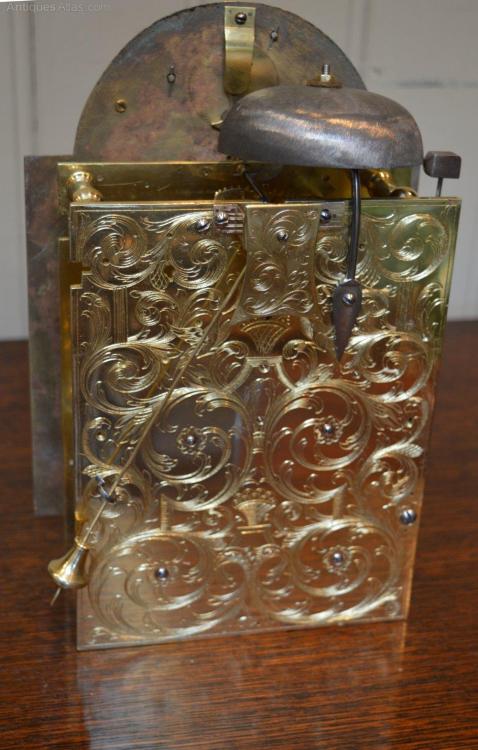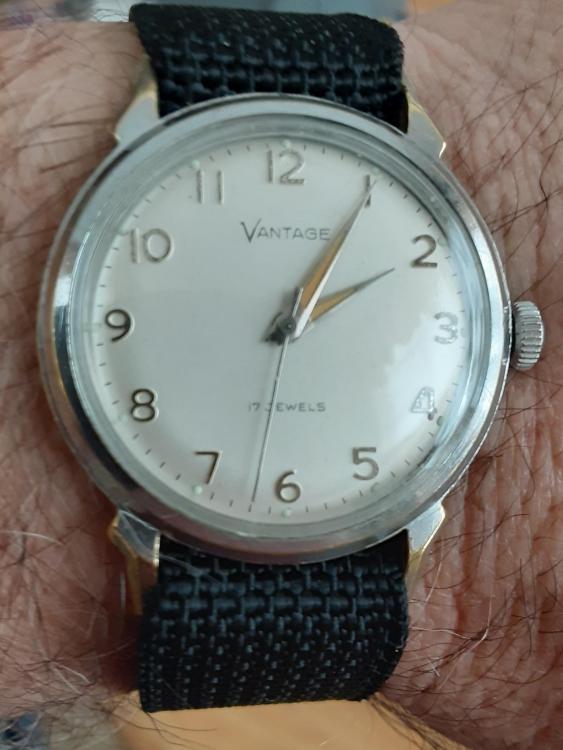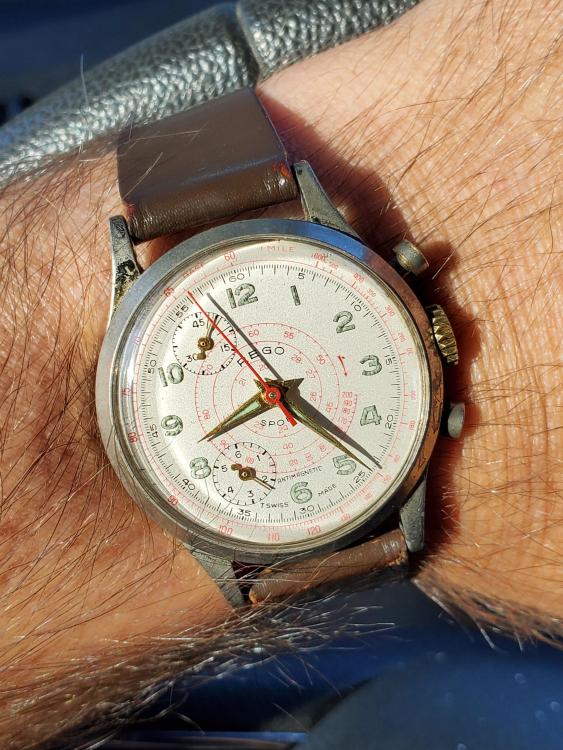Leaderboard
Popular Content
Showing content with the highest reputation on 02/02/20 in all areas
-
3 points
-
This Vid explains how the Seiko spring drive works. Seiko IMO are now the leading innovators of the industry. This is a truly new concept giving a mechanical watch the accuracy of quartz.2 points
-
I've just 'discovered' early Timex watches, though all of mine are electric or very early quartz ones....2 points
-
1 point
-
Sorry about your mishap, unfortunately I can't help in locating a spare part, I surely hope you can find it, try an UltraViolet LED light in darkness. Incidentally is for very good reasons that is common advice to work on anything that could remotely fly off inside a clear plastic bag. Ask me how do I know that is sound advice that doesn't cost a penny, for beginners, intermediate, and why not - pro's.1 point
-
The corrosion looks like a major issue to me, and probably necessitates a new dial. However if you are feeling creative, the actual structure of the dial looks sound. If it is possible to remove the indices and the other dial furnishings, then you could clean off the current badly damaged dial and re-create it in Inkscape, per this thread. The process is not simple, but nor is it impossible, and given the current state of the dial, I would argue you have little to loose by experimenting with it (although others may disagree). Weigh up the cost of a new old stock replacement, a second hand dial, and your time and artistic talents, and see which option(s) you feel would best suit your needs. If I were going down the custom dial route, I would start by salvaging the accents etc, then strip off the old finish, and see how bad the underlying surface is. If necessary, then polish and re-brush the surface, then airbrush on a coloured laquer (in several very thin coats). Create and apply two decals, one to the dial, one to the subdial, seal with a couple of very thin clear coats, then re-fit the indices etc. A replacement dial is obviously a lot less work, but a custom one might be an interesting learning experience.1 point
-
This is the other really 'different' one that I have...... Just waiting for these to arrive in the post, picked up as a job lot .... going to be busy for a bit...1 point
-
I have a bunch of early electrics in the to-do pile. None as nice as that one though.1 point
-
1 point
-
Hardly, as it's the duplicate of this one. jdrichard, please do not post duplicate topics, and post in the proper section. Otherwise it just makes difficult to help you.1 point
-
1 point
-
I don't think that any member here did. Seiko mandates these to be sent to Japan for repair or service. Because of that you can find tons of marketing material, influencer and owner raving but very little in-depth technical covering. The Horological Times issue attached below has some. And I remember a photo service by an American watch academy, but can't find it anymore. 2006-01-web.pdf1 point
-
Maybe this thread will help? https://r.tapatalk.com/shareLink/topic?url=https://www.watchrepairtalk.com/topic/13563-any-hints-on-repairing-this-watch/&share_tid=13563&share_fid=57773&share_type=t&link_source=app1 point
-
1 point
-
As @Graziano mentioned that he thought the movement was based on the ETA 2452, I thought you might find this post (ETA 2472 - Disassembling the automatic device) of mine useful. Also, if the date complication is similar to that of the ETA 2472 you might also find this post useful (ETA 2472 - Disassembling the date mechanism). Also, if this movement has a setting lever screw similar to the setting lever screw of an ETA 2472 that I serviced somewhat recently, it is extremely important to replace the setting lever screw before the barrel bridge is replaced. This is trickier than you might think as the setting lever screw can be replaced after the barrel bridge has been replaced but will lead to several problems that can be hard to foresee. You can read more about my ordeal with the setting lever screw here and here. So, if you your movement indeed is similar to my ETA 2472 you'll find my complete service walkthrough of it here including my lubrication suggestions based on ETA's technical communication for the 2824-2 as suggested by Graziano. The walkthrough consists of about 130 disassembly pictures and about 130 assembly pictures. Good luck!1 point
-
Nothing broken. I've since disassembled the movement and all looks good.1 point
-
Loctite is # 1. the 3 basic strengths have been around for years. if you want to remove it, 250 degres F. will losen it. vin1 point
-
Hi there I don't have a manual but I am certain that movement is based on an eta 2452 and if you have a screwed hairspring I have some spare coming, let me know If you need oiling recommendations, use the technical sheet for the 2824-2....1 point
-
I've got quite a few of them......just a few examples here:- Seiko 6119-8430 Seiko 3803-7040 from 1972..... Seiko 6319-5010.... Citizen Cosmotron.... Seiko 0903-7029..... Seiko 7123-8430... Even a couple of Timex Electrics....... Just a few of a MUCH larger collection... I rest my case1 point
-
It is a quality movement, what I like about it especially, is its bush bearing rotor. Some come with permanently sealed barrels. In my book its design is superior to ETA, more like zenith movements.1 point
-
More madness from the penny lots. Antimagnetic? Really? Could this actually be a mechanical analog windup with a small LCD below? Only one way to find out, so I bid. As is often the case, I was the only bidder, so I now either have a Casio clone, or perhaps something a little more interesting.1 point
-
Yes, it is an old timer jdm. I think I dated it to 1963 by the numbers on the inside of the case. I can reuse the barrel and haven't measured the mainspring yet but I know I can order by size as you suggest. I was curious about the mov't since I couldn't find any info & I've been pretty lucky looking up old mov't's that I come across. But you may have solved this for me rogart63. I didn't check Borel and went straight to my go to source which is Cousins. The link you sent does show SEK 851 and they have the mainspring listed for it. Once I measure the mainspring I'll compare to Borel and that may be it. Let you know and thanks so much.1 point
-
Something different I put together, bead blasted HMT case, hour and minute hands from Cousins and dial from eBay. Second hand I painted red and re lumed the arrow. Unfortunately I couldn’t find a mechanical movement with the correct stem height so used a Ronda quartz movement. A logo would be nice but for love or money I can’t source one1 point
-
1 point
-
I do like how the pattern on the back plate has been continued on the brackets to hold it in the clock. I've not seen that before. I do like the hands although it looks like the minute hand has been twisted slightly, but I would think long and hard before trying to straighten it.1 point
-
"William Goffe, Watchmaker and Chronometer maker to his Majesty’s Packets, is listed in as working at The Moor, Falmouth c. 1800 in Cornish Clocks and Clockmakers [H. Miles Brown]. He is listed as a London maker in Baillie’s Watchmakers and Clockmakers of the World. " Source -> https://lapada.org/art-and-antiques/domestic-regulator-longcase-clock-by-goffe-falmouth/ Keep us posted with your progress.1 point
-
Pretty sure you can't release the power before removing the auto module. Don't worry, it's ok to take it off. The click for the ratchet wheel will take over once the module is removed. This is derived from an ETA 2472 (or that family), VWatchie did a walkthrough that should be helpful. https://www.watchrepairtalk.com/topic/12634-eta-calibre-2472-service-walkthrough/1 point
-
1 point
-
Just finished the overhaul of my Rego Chronostop pin pallet. It has a single jewel, Lapanouse movement. Had to fit a new crystal as the replacement that was on it didn't clear the second hand and was stalling the movement. The dial is perfect for a watch this old. It is officially the LOUDEST ticking watch I own! I kept the old ratty leather band, it kinda adds to the charm. I kind of feel like those old Remington shaver commercials, where Victor Kiam liked the their razors so much that he bought the company.... well, I just bought another one of these on eBay.1 point
-
as i recall. the early "de Carle" book says the concept of a slipping main spring was patended by Movato. vin0 points




